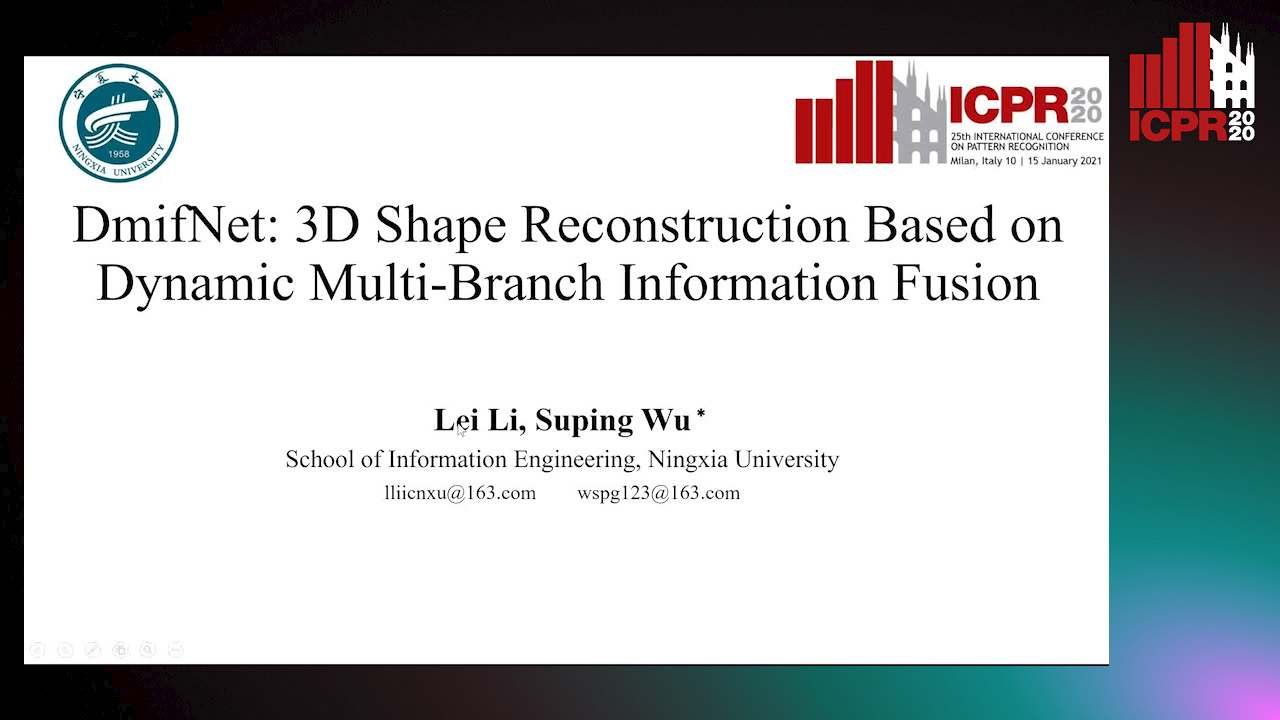Suping Wu
Paper download is intended for registered attendees only, and is
subjected to the IEEE Copyright Policy. Any other use is strongly forbidden.
Papers from this author
DmifNet:3D Shape Reconstruction Based on Dynamic Multi-Branch Information Fusion

Auto-TLDR; DmifNet: Dynamic Multi-branch Information Fusion Network for 3D Shape Reconstruction from a Single-View Image
3D object reconstruction from a single-view image is a long-standing challenging problem. Previous works are difficult to accurately reconstruct 3D shapes with a complex topology which has rich details at the edges and corners. Moreover, previous works use synthetic data to train their network, but domain adaptation problems occurred when testing on real data. In this paper, we propose a Dynamic Multi-branch Information Fusion Network (DmifNet) which can recover a high-fidelity 3D shape of arbitrary topology from a 2D image. Specifically, we design several side branches from the intermediate layers to make the network produce more diverse representations to improve the generalization ability of network. In addition, we utilize DoG (Difference of Gaussians) to extract edge geometry and corners information from input images. Then, we use a separate side branch network to process the extracted data to better capture edge geometry and corners feature information. Finally, we dynamically fuse the information of all branches to gain final predicted probability. Extensive qualitative and quantitative experiments on a large-scale publicly available dataset demonstrate the validity and efficiency of our method. Code and models are publicly available at https://github.com/leilimaster/DmifNet.
Multi-Attribute Regression Network for Face Reconstruction

Auto-TLDR; A Multi-Attribute Regression Network for Face Reconstruction
Abstract Slides Poster Similar
In this paper, we propose a multi-attribute regression network (MARN) to investigate the problem of face reconstruction, especially in challenging cases when faces undergo large variations including severe poses, extreme expressions, and partial occlusions in unconstrained environments. The traditional 3DMM parametric regression method is absent from the learning of identity, expression, and attitude attributes, resulting in lacking geometric details in the reconstructed face. Our MARN method is to enable the network to better extract the feature information of face identity, expression, and pose attributes. We introduced identity, expression, and pose attribute loss functions to enhance the learning of details in each attribute. At the same time, we carefully design the geometric contour constraint loss function and use the constraints of sparse 2D face landmarks to improve the reconstructed geometric contour information. The experimental results show that our face reconstruction method has achieved significant results on the AFLW2000-3D and AFLW datasets compared with the most advanced methods. In addition, there has been a great improvement in dense face alignment. .